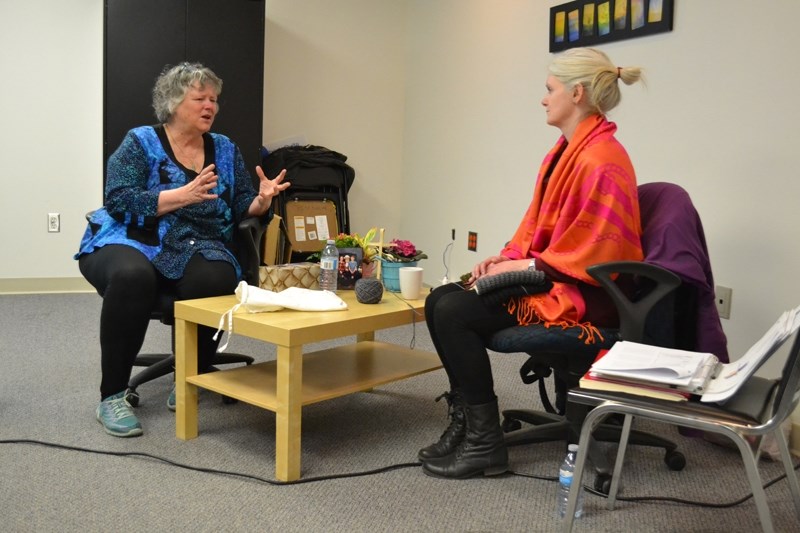A two-year research project is about to begin in which volunteers, coordinated by the Olds and District Hospice Society (ODHS), help elderly people stay in their homes longer by enabling them to get - or remain - involved in the community.
The project is called NCARE, which stands for Navigation, Connecting, Accessing, Resourcing and Engaging and is coordinated by the University of Alberta and the University of British Columbia. It has already been tried in B.C. and will be launched in Nova Scotia as well.
It's hoped the project in Olds can begin in the next couple of weeks and end in March 2019. Four volunteers, known as "navigators" were trained during a two-day session. Now, organizers are attempting to sign up about six elderly clients who will be seen by those navigators.
ODHS volunteer coordinator Debbie Shindler says they're called navigators because their role is to find ways to match their clients' concerns with solutions in the community.
"As volunteers, they go out to the homes of older adults who really have advanced chronic illness, but they're well enough to be in the community and they're fiercely independent, we're finding," says Wendy Duggleby, a professor and research chair in aging and quality of life and a director of the innovations in seniors' care research unit at the faculty of nursing, University of Alberta.
"What the volunteers do is help them stay at home by asking them what's most important to them today. We call that focusing on their quality of life.
"Because they're volunteers and they're volunteers that are from their communities, they know the resources," she adds.
An example, acted out during the training, was finding a way for an elderly woman who could no longer make it to her church basement to assist with the food bank to still help out - in a different way.
"It was something that was important to her and she could no longer get down the stairs at the church. So when she says something like that, then the volunteer, because they're embedded in the community, can do a couple of things," Duggleby says.
"She or he can help them find something else that might be meaningful in the church. We've had an example in some of the other communities where, instead of physically being able to help with the food bank, they were able to make phone calls to get other people to come out, or write thank-you letters or phone the newspaper in terms of advertising."
She cited another example of an older gentleman who could no longer go out and get groceries the way he used to. So the navigator found a grocery store that would allow him to phone in his orders and pick them up via taxi.
Duggleby says the Olds project is unique because it's the first time a hospice society has been involved in linking volunteers and clients.
Duggleby is hopeful that when the study here ends, the Olds NCARE system will become a permanent service.
"I've met with the hospice board already and we have a very strong community advisory committee. They're already starting to think about how they might make this sustainable," she says.
Duggleby says the Olds experience may serve as a template for other Alberta communities.
ODHS vice-president Kathy Kemmere is excited by the possibilities of NCARE because these days, people with chronic illnesses are living longer than they used to.
"How do we navigate through the health-care, social and communities system? What services are available in our community to support those with chronic illness?" Kemmere asks.
"The best part of this project for me is the regular connection of care, as our trained volunteers meet with their clients to help them address issues and increase their opportunity to connect with appropriate services," she adds.
"My hope through this is that it is a simple solution to support people staying at home as long as possible."
"My hope through this is that it is a simple solution to support people staying at home as long as possible."KATHY KEMMERE VICE-PRESIDENT OLDS AND DISTRICT HOSPICE SOCIETY



